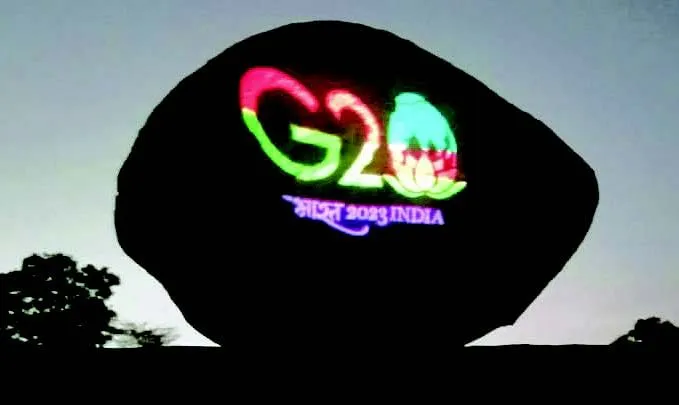India has taken over leadership of the G-20 and has said it wants to lead with a presidency of “healing, harmony and hope”, with the theme of “One Earth, One Family, One Future”. This reflects the very Indian idea of “Vasudhaiva Kåutumbakam” and the celebration of all life and the interconnectedness of the wider universe. The G20, or Group of Twenty, comprises as many as 20 major developed and developing economies, so this is described as “the premier forum for international economic cooperation”. Clearly, economics will be at the heart of this cooperation and in that sense the Indian theme would also be seen within the meaning of economic prosperity – that the world should prosper together as part of one global community. This is a fine idea but it comes at a difficult time. It is quite obviously fraught with many challenges that must be overcome in order to become workable. India holds the Presidency of the G20 from December 1, 2022, to November 30, 2023. This includes a major event where 43 heads of delegations, the biggest so far in the G-20, will be participating in the New Delhi summit this September. So, time is short and ambition is high.
This ambition comes at a time of heightened geopolitical volatility, a very real VUCA world that is showing signs of increasing volcanic activity, if that term can be used. Consider the rise of right-wing politics (the latest woes of Republicans in the US, where deciding a House speaker takes multiple votes because the hardliners within the party want to extract their price), economic nationalism, the attempt to shut borders rather than open them more freely, the Russian invasion of Ukraine and consequent economic turmoil, rising inflation worldwide, the continued toll of Covid-19 and new variants of the virus, particularly in China and that country’s refusal to be transparent with information – all point to the world in a state that does not look like a peaceful and set of families, let alone “one family”.
In that sense, India has a difficult task of leadership at hand. But this is also the time that can bring out the best, with the right leadership marked by a sense of purpose and the understanding that everyone suffers if the strains continue or escalate.
In order to meet these challenges, it may help to revisit the factors that contributed to the period of “great moderation” from the mid-1980s to 2007, when the global economy was growing and many were lifted out of poverty. These included broader geopolitical peace, conciliatory political leadership, low inflation, deepening globalisation and free movement of capital. David Ricardo’s theory of “comparative advantage” which made the case for opening up global trade was at play along with a universal sharp focus on economic growth.
Unfortunately, all the building blocks seem to have crumbled and inequality and economic misery are visible across geographies. The “surprising comeback of protectionism” hasn’t been a sudden development. It has been slow cooking for more than two decades. It was more than two decades ago that an academic paper picked up early warning signs as it noted: “public anxiety about globalisation and free trade is rising … In an increasing number of grassroots movements and Non-Governmental Organisations [NGOs], proposals for new forms of protectionism against the social and ecological consequences of free trade and increased capital mobility are being discussed.” (“Game, Set, and Match for Mr. Ricardo?” by Robert Went in the Journal of Economic Issues, September 2000). Evidence of unrest later became plain for anyone to see, and the situation has only been detonating since the global financial crisis of 2008.
Yet, the idea of growth fuelled by globalisation has been very real and many countries have benefited. That memory is only too recent to be forgotten.
The total factor productivity (TFC) growth in the first world was substantially contributed by the increase in labour force – new births, migration, and greater participation of women, and technology upgradation. Currently, population is declining, migration is prevented and women’s participation has nearly peaked. Covid-19 has shaped up reluctance to work. Technology improvements are contributing, albeit marginally.
The developing economies were beneficiaries of outsourcing, flow of abundant capital and sharing of technological developments. The planetary economy was the beneficiary of broader global geo-political peace, low inflation, low interest rates and low costs of labour, energy, metals and minerals.
Now, with economic growth threatened, the customary dialogue and discussions are bound to be infructuous. When the world at large is facing a near similar situation, it is time to sink the idea of a First World and a Third World. In this context, “One Earth, One Family, One Future” becomes very relevant. Therefore, the underpinning of narratives in all the meetings will have to be that all are sailing in the same boat and will benefit equally from cooperation toward reorienting and even rewriting the rules of the game.
To move forward, it is necessary to prioritise cooperation and dialogue between nations and to work towards ending geopolitical conflicts. It is also important to address issues of inequality and deprivation. Protecting the environment and addressing climate change are also crucial for the long-term well-being of the planet.
Ultimately the goal is ambitious and will require the effort and cooperation of all nations and people to achieve. The question to ask is: Is that possible?
(The writer is a former Chairman of SEBI and LIC. Views are personal)
(Syndicate: The Billion Press))







